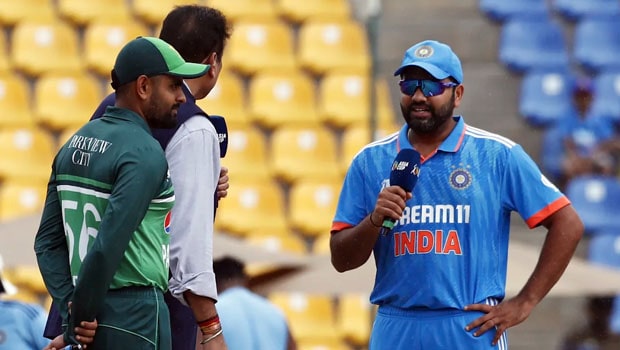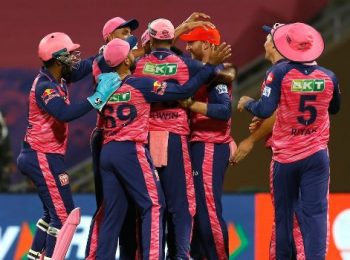The upcoming Asia Cup 2025 clash between India and Pakistan promises to be an exciting contest, with both teams bringing their own strengths and challenges to the table. India have already played one game in the tournament and looked hugely impressive in their opening performance. Pakistan are a strong side and are expected to go a long way in the tournament. The focus of this match remains on how these two sides shape up ahead of their much-anticipated encounter.
India’s opening game showcased a team that appeared to have all bases covered. The selection for that match was interesting and seemed tailored to the specific conditions. The balance of the side resembled the kind of team composition India used during the Champions Trophy, with an extra spinner included to suit the conditions. This strategy made sense given the surface and circumstances, However, I was still surprised at the absence of Arshdeep Singh from the playing XI. Even though the decision was understandable in the context of the conditions, I strongly believe that as the tournament progresses and moves into its latter stages, India will need to find a way to include Arshdeep in the side.
How India adjusts their combination to bring him in remains a question. The most likely changes would involve looking at Shivam Dube’s position or Axar Patel’s place in the team. The rest of the players seem to have their spots secure, making these two the most flexible options for reshuffling. The goal would be to maintain the balance of the team while also strengthening the bowling attack for tougher matches ahead.
Kuldeep Yadav’s performance in the opening game was exceptional, underlining his value to the side. Many have long advocated for his inclusion in India’s Test squad, but even though that did not materialise, Kuldeep has proven himself to be a fantastic bowler across formats. Against stronger opponents like Pakistan, he will face a much stiffer challenge, but his skill set will remain a key weapon for India.
The batting lineup also brings up some interesting talking points. While there is absolutely no doubt about Shubman Gill’s quality or his position as vice-captain, I would prefer to see Sanju Samson open the innings, pushing Gill down to number three. In such a scenario, Suryakumar Yadav, would slot in at number four, followed by Tilak Varma at five, with Hardik Pandya at six and Shivam Dube at seven. This arrangement, in my view, provides a better balance and flexibility to the lineup. However, the Indian management seems
inclined to persist with Gill as an opener, which is hard to criticize given his success at the top of the order in franchise cricket and other formats. The debate is less about Gill’s individual ability and more about how his role impacts the overall team structure. Regardless of the chosen combination, flexibility will be essential, and India will need to adapt their order based on match situations.
Turning to Pakistan, their side presents a different kind of challenge. While historically known for their formidable pace attacks featuring the likes of Haris Rauf and Shaheen Shah Afridi, this time their biggest strength might actually lie in their spin department. If Pakistan are to upset India, their spinners will need to play a pivotal role. Sufiyan Muqeem, a left arm wrist spinner with good variety, stands out as a key figure. Alongside him, Mohammad Nawaz brings experience and craft as a left-arm orthodox spinner, while Abrar Ahmed has been in impressive form, particularly in the Emirates T20 leading up to this tournament. These three spinners have the potential to trouble the Indian batters if they find the right rhythm and conditions work in their favor.
Pakistan’s pace attack remains solid, with Shaheen expected to be a constant presence and Haris available as well, though Rauf has been slightly expensive in recent games. These seamers give Pakistan a balanced attack, but the real difference-maker could be the spinners. For Pakistan to have a genuine chance of victory, their spinners will need to dominate and control the middle overs, creating pressure and forcing mistakes from India’s powerful batting lineup.
In terms of batting, Pakistan has depth but will rely heavily on its top order to set the tone. Young talent like Saim Ayub at the top provides an exciting option, while Fakhar Zaman adds experience and aggression at number three. The middle and lower-middle order features players like Mohammad Haris and Faheem Ashraf, who bring stability and hitting ability at positions six, seven, and eight. However, for this depth to be effective, Pakistan’s top-order batters must perform. If they fail to deliver, the lower order could be exposed to India’s high-quality bowling attack, which could tilt the balance decisively in India’s favor.
Overall, India enters the match as clear favorites. Their depth in both batting and bowling, combined with their form and experience, gives them a significant edge. However, Pakistan cannot be underestimated. Their best route to victory lies in their spin attack. If their spinners can create enough pressure and take key wickets, they could disrupt India’s rhythm and bring the contest alive. Much will also depend on Pakistan’s top-order batting, which must rise to the occasion and provide a solid platform.
As the game approaches, it is shaping up to be a thrilling contest between two arch-rivals. While India’s dominance and balance make them the team to beat, Pakistan’s unpredictable brilliance ensures that the match will be anything but straightforward. The battle between India’s strong batting unit and Pakistan’s potentially dangerous spin attack could very well decide the outcome.



























